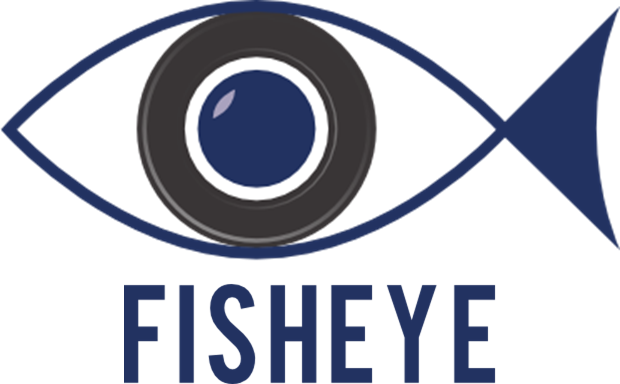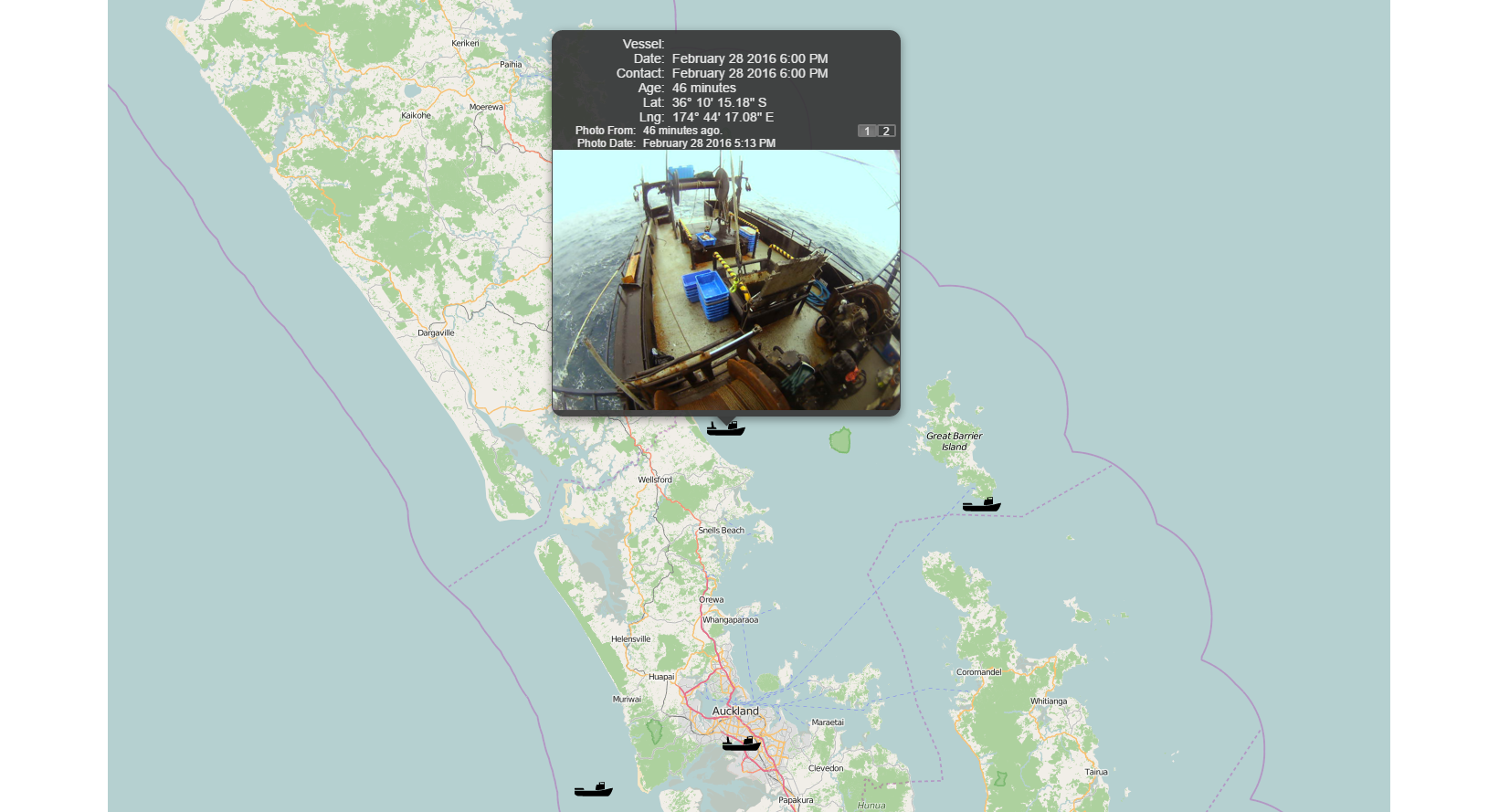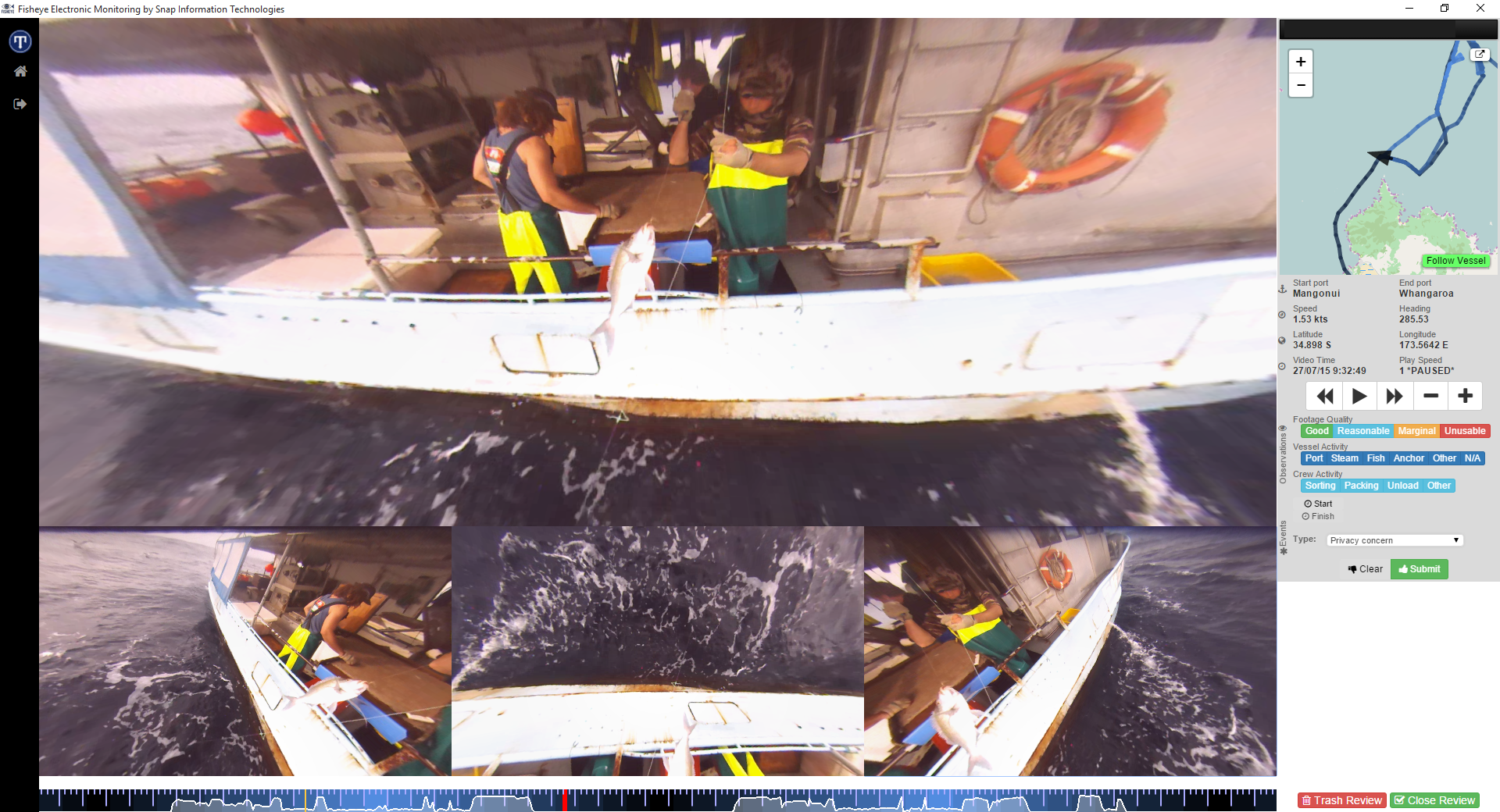Innovative fisheries monitoring
Video observation
Observational data collected on fishing vessels is routinely used by fisheries researchers and managers to supplement data provided by fishers. On larger vessels, such as the New Zealand deepwater fleet, observations are typically collected by fisheries observers carried as supernumeraries on a proportion of fishing trips.
Observer coverage has been more challenging to implement in inshore fisheries. Smaller vessels struggle to accommodate fisheries observers and the fact that these vessels undertake shorter, weather-dependent trips makes use of human observers less efficient.
Fishers in several inshore fisheries recognised that observational data is required, especially when assessing fisheries interactions with protected species, and have been keen to pursue video observation as a more efficient means of collecting observational data. As a result, Trident Systems has worked with Snap Information Technologies to adapt their innovative camera technology for use in fisheries monitoring programmes.

Key innovations have been:
- use of full hemisphere cameras that allow retrospective pan and zoom in recorded footage, and so reduce the number of cameras required in some monitoring applications
- automated footage retrieval to retrieve footage from vessels autonomously
- hardware optimised for round the clock recording on small vessels

High resolution Vessel Monitoring System with real time images

Creating observational data from on-shore review of at-sea footage
Trident has been contracted to implement monitoring programmes for a range of fisheries, including:
- a Vessel Monitoring System for the snapper (SNA 1) fleet
- video observation in the snapper (SNA 1) trawl fleet, focussing on quantifying sub-legal snapper returns
- video observation trails in the Fiji surface longline fishery
- vessel monitoring for the paua and sea cucumber dive fisheries
- video observation in the snapper (SNA 1) and bluenose (BNS 1) bottom longline fisheries
